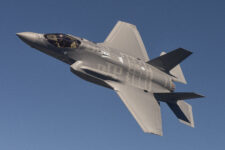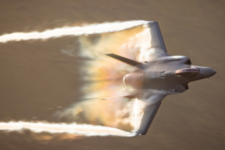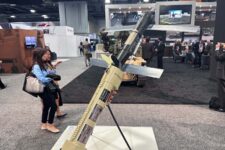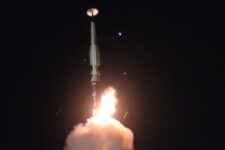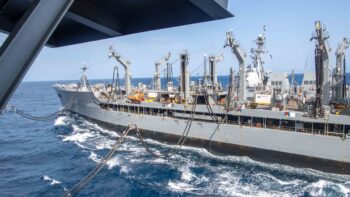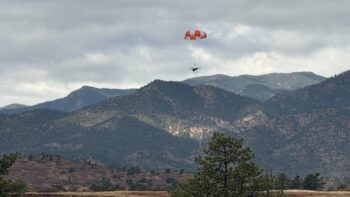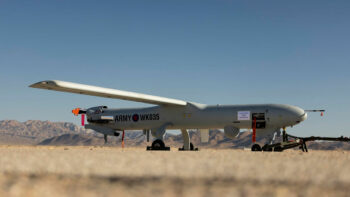
A pilot climbs into an F-15C Eagle. (U.S. Air National Guard photo by 1st Lt. Bonnie Harper/Released)
AFA WARFARE SYMPOSIUM — China has recruited current and former servicemembers from “multiple” NATO countries, a top US military official in the region said Monday, warning that the scheme to bolster expertise for the People’s Liberation Army Air Force is ongoing despite public pressure from the US and NATO allies.
“There have been successful attempts” of Chinese recruitment “from multiple nations. It’s a lot of NATO nations,” Gen. James Hecker, the commander of US Air Forces in Europe (USAFE), said in a roundtable with reporters at the Air & Space Forces Association’s Warfare Symposium.
“But the good news is, we found out about this fairly early on. And we’ve had successes in getting some of the pilots that were involved in that kind of stuff — we’ve been able to bring them back. Mostly willingly, depending on the nation,” he said.
A handful of unspecified nations had to make changes to their law to get some of those service members back, Hecker said. He said Monday that a public awareness campaign by the US and NATO “hasn’t stopped [China’s] recruiting effort. So we continue to pound the drum to make sure that everybody that’s retired military, and particularly pilots, that they’re aware that this effort is ongoing, and that it’s unacceptable.”
In a Feb. 8 press release, USAFE warned that companies with Chinese ties were searching for current and former service members with backgrounds like “pilots, maintainers, air operations center personnel, and a variety of other technical experts from across multiple occupations that could provide insight into U.S. and NATO air tactics, techniques and procedures.” The issue prompted a first-of-its-kind conference to discuss ways to combat the recruitment campaign at Ramstein Air Base in Germany, where USAFE says the US and 22 NATO allies attended.
It’s not the first time that officials have warned of China trying to recruit current and retired service members to bolster Beijing’s flying prowess. In September 2023, then-Air Force Chief of Staff Gen. CQ Brown warned in a letter to airmen that China was attempting to lure them in.
“By essentially training the trainer, many of those who accept contracts with these foreign companies are eroding our national security, putting the very safety of their fellow servicemembers and the country at risk, and may be violating the law,” Brown wrote in the letter.
A former US pilot was arrested in Australia in 2022 reportedly related to his work with China. British intelligence warned that same year that up to 30 former British pilots had trained Chinese pilots.
Ukraine Battlefield Needs
Hecker, who plays a key role in coordinating Ukraine’s defense against Russia’s invasion, highlighted two pressing needs on the battlefield: cheaper solutions to counter drone attacks, as well as a “persistent air picture” below 10,000 feet.
As drone warfare proliferates around the globe, officials have increasingly emphasized the need to field capabilities that are less expensive than traditional munitions like missiles — typically orders of magnitude more costly than the drones they down. Hecker pointed to some capabilities, like anti-aircraft guns and electronic warfare, that have been effective, and officials have said a key weapon against drones will likely be directed energy once the technology evolves.
Additionally, Hecker said Ukraine has “done some pretty sophisticated things” to defend against the drone threat, including by deploying a network of acoustic sensors that can detect drone activity that can directly feed information to anti-aircraft batteries.
In part due to the drone threat, Hecker said another key necessity is a continuous air picture below 10,000 feet — where drones and missiles often fly to evade radar. An Australian-operated E-7 radar plane operating in the region provides that picture well, Hecker said, noting some other solutions are being pursued such as aerostat balloons equipped with payloads that can detect threats like drones.
Officials are also “looking at” doing tests with acoustic networks like ones in use in Ukraine, Hecker said, to see if those systems could be exported to NATO.
